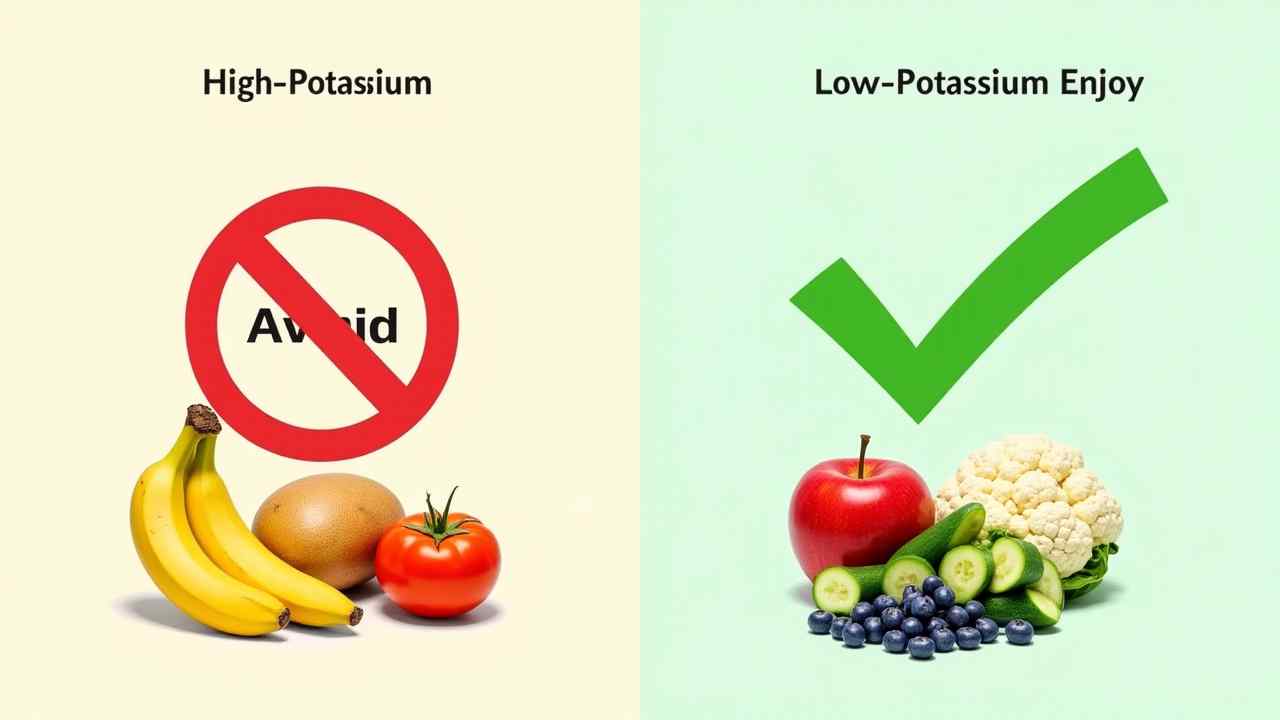
🍎 A Guide to the Low-Potassium Diet (Food List for Kidney Health)
🍎 A Guide to the Low-Potassium Diet (Food List for Kidney Health) 🍎
❗ CRITICAL MEDICAL WARNING: A low-potassium diet is a serious, therapeutic diet prescribed by a doctor for specific medical conditions, most commonly Chronic Kidney Disease (CKD). You must only follow this diet under the strict guidance of your doctor and a renal dietitian. Following this diet unnecessarily can be harmful.
If your doctor has recommended a low-potassium diet, you may feel overwhelmed. Potassium is found in many healthy foods, and the list of what to avoid can seem long and surprising. The goal is not to eliminate potassium, but to control it.
This guide will help you understand the basics. We will provide a clear food list of high- and low-potassium foods. Let's make this medical diet easier to manage. ✅
🤔 What is Potassium and Why Do Some People Need to Limit It?
Potassium is an essential mineral and electrolyte. It is vital for your nerves and muscles, including your heart, to function correctly. Healthy kidneys are responsible for filtering excess potassium out of your blood and keeping it in a safe range.
When the kidneys are not working properly, they cannot remove this excess potassium. This can cause it to build up in the blood to dangerous levels, a condition called hyperkalemia. This can lead to serious heart problems. The goal of a low-potassium diet is to prevent this dangerous buildup.
🚫 What Are the Highest-Potassium Foods to Limit or Avoid?
This is the most important part of the diet. Knowing the main high-potassium culprits is key. Many of these are staples in a typical healthy diet, which is why this plan can be so tricky.
The highest-potassium foods you will need to strictly limit or avoid include:
- Certain Fruits: Bananas, oranges, cantaloupe, honeydew melon, avocados, and dried fruits like raisins and prunes.
- Certain Vegetables: Potatoes (both white and sweet), tomatoes and tomato products (sauce, paste), and many leafy greens like spinach and Swiss chard. Many winter squashes, like pumpkin ("balkabağı"), are also high in potassium.
- Legumes: Lentils ("mercimek"), kidney beans, and chickpeas are all very high in potassium.
- Dairy: Milk and yogurt ("yoğurt") can be significant sources.
- Other: Salt substitutes (which often use potassium chloride) are extremely dangerous and must be avoided.
In cuisine, staples like potatoes ("patates") and tomatoes ("domates") must be carefully managed on this diet.
✅ What Are Some Safe, Low-Potassium Foods to Enjoy?
The good news is there are still many delicious foods you can eat! Building your meals around these options is the key to a successful low-potassium diet. You have many great choices:
- Fruits: Apples, grapes, and all types of berries (strawberries, blueberries, raspberries).
- Vegetables: Cauliflower, cucumbers, bell peppers ("biber"), onions, and iceberg lettuce.
- Grains: White bread and white rice are lower in potassium than their whole-grain counterparts.
- Protein: Chicken, turkey, and eggs are good choices in moderation.
💧 Can Cooking Methods Help Reduce Potassium?
Yes! This is a very important technique for this diet. For certain high-potassium vegetables like potatoes and carrots, you can use a process called leaching to remove some of the potassium before cooking.
How to do it: Peel the vegetable and cut it into small pieces. Rinse them, then soak them in a large amount of warm water for at least two hours. Drain the soaking water and rinse the vegetables again. Then, boil them in a large amount of fresh water. This process can significantly reduce the potassium content, making these foods safer to eat in moderation. Always ask your dietitian if this method is right for you.
Managing a low-potassium diet is a journey that requires careful planning and a partnership with your healthcare team. They can provide you with a detailed, personalized food list to keep you safe and healthy. 🩺